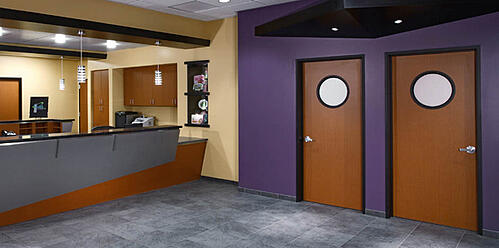
Choosing the right doors for your hospital isn’t an open-and-shut case, so investigate your options.
Whether we’re turning a knob, pushing a handle, or triggering an automatic sensor, we go through hundreds of doors a day without a thought. But choosing the right doors for your hospital requires some planning. Wayne Usiak, AIA, founder of BDA Architecture in Albuquerque, N.M., and a Veterinary Economics Editorial Advisory Board member, urges practitioners to consider these factors when deciding on doors.
1. Cost
“As hospital budgets escalate, you need to save money where you can,” Usiak says. For this reason, hollow-core doors are fine in some areas, such as closets and other spaces that don’t need sound control and aren’t likely to take a beating—from the impact of a gurney, for example. In fact, every other consideration must be balanced against cost to ensure you get the doors you need without overshooting your budget.
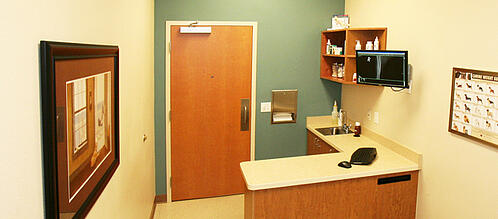
2. Durability
The front door of a hospital opens and closes 100 to 200 times a day, Usiak says, and you don’t want to be constantly repairing it—which is what you’ll be doing if you opt for a residential entry door. He recommends installing aluminum storefront entry doors and frames because they’re long-lasting. You’ll also need to carefully consider your hardware choices for functionality, convenience, ADA requirements, durability, and aesthetics.
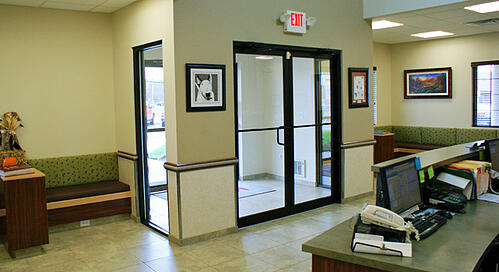
3. Sound control
Usiak uses drop seals and weather sealing to provide acoustic control in key areas, such as kennels and wards. The mechanized seals lower to the floor when doors are closed, creating a soundproof barrier. “But they add $100 to $150 to the door’s cost, so you must be judicious about which doors you select,” he says.
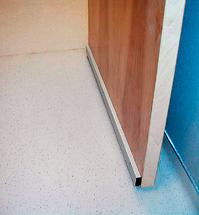
4. Viewability
Door windows are both a security issue and a practical consideration. A window makes sense for an isolation room or a rear delivery door so personnel can check on animals or see who’s on the other side without opening the door. But it’s best to use small windows in kennel doors because a glimpse of a friendly face can set off a barking frenzy. Although windows can diminish a door’s soundproofing, Usiak does not recommend acoustically controlled glass because of the prohibitive cost. A small window can minimize sound leakage while providing
viewability.
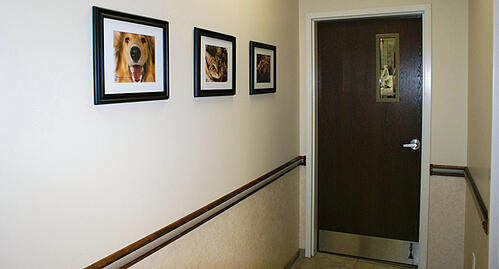
5. Appearance
Doors enhance a hospital’s attractiveness, but aesthetics must be balanced against practicality. For example, a raised panel door painted white might be perfect for your hospital’s country theme, but paint shows scratches. Stained flat-slab doors provide plenty of warmth to an interior while making scuffs and scratches less visible.
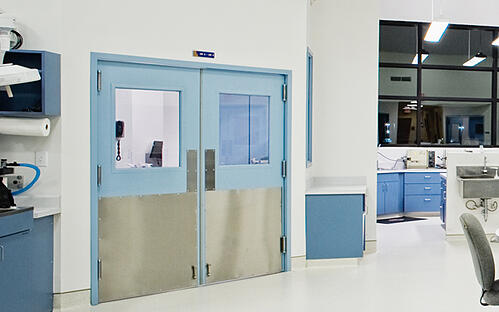
6. Unforeseen consequences
No matter how carefully you plan, you can’t always anticipate the outcome. For example, automatic front doors might seem like a great idea—until an escaped pet triggers the infrared sensor and bolts down the street. Or your light-colored door frames may look great—until frequent mopping turns them black. To avoid these scenarios, Usiak suggests hiring an architect with experience in veterinary hospital design.
